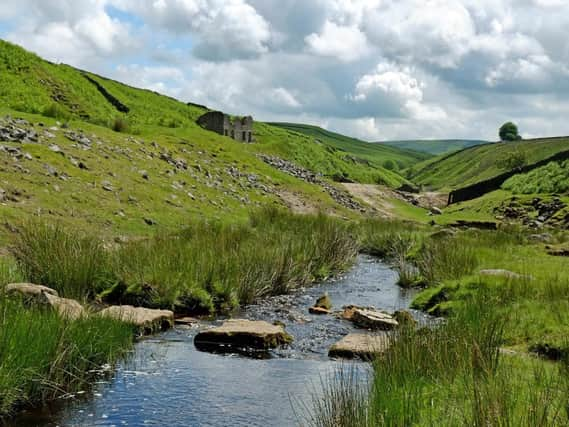Yorkshire Dales National Park to launch solar panel, heat pump and LED schemes to tackle climate change


A long-term strategy has been established in the Yorkshire Dales National Park which has seen harmful carbon emissions dramatically reduced in the past 15 years.
A series of new schemes are now being introduced including solar panels, air source heat pumps and LED lighting at the Yorkshire Dales National Park Authority’s buildings, while electric vehicle charging points are being installed at all 10 of its public car parks.
Advertisement
Hide AdAdvertisement
Hide AdCarbon emissions had reduced by nearly two-thirds by March last year since the eco-friendly blueprint was launched in 2006, although the authority’s member champion for sustainable development, Carl Lis, said efforts need to intensified.
He added: “The climate and nature emergency demands the sort of rapid response that we are making. The latest work will reduce our emissions further, but we know we still have a long way to go.
“We want to eliminate carbon dioxide emissions from our operations, as well as embed sustainability in everything we do and use, from the materials we use for fixing paths or planting trees, to the jackets we wear while out working. We can take encouragement from the progress being made, but we must not let up.”
The renewable energy technology which is being installed on buildings will result in a 40 per cent reduction in the annual amount of carbon dioxide emitted from running the authority’s properties.
Advertisement
Hide AdAdvertisement
Hide AdThe National Park centres at Aysgarth Falls and Malham along with the Dales Countryside Museum in Hawes have had solar panels installed in the past few weeks.
Solar panels are also set to be introduced on the roof at the Colvend offices in Grassington, while additional panels have been installed at the authority’s Yoredale offices in Bainbridge. Air source heat pumps will be installed at the centres at Malham and Aysgarth Falls next week.
Each property where work is being done is expected to generate electricity for the National Grid outside of business hours or during long sunny spells. Lighting has been changed to LED technology in all the authority’s buildings.
The first three electric vehicle chargers were installed last year, and have saved nearly 4,000 tonnes of carbon dioxide being emitted. Charging a car for one hour at one of the new points adds about 30 miles of range.
The carbon reduction plan, which was approved in April last year, aims to reduce emissions by at least 95 per cent by 2030 compared with a baseline in 2005.